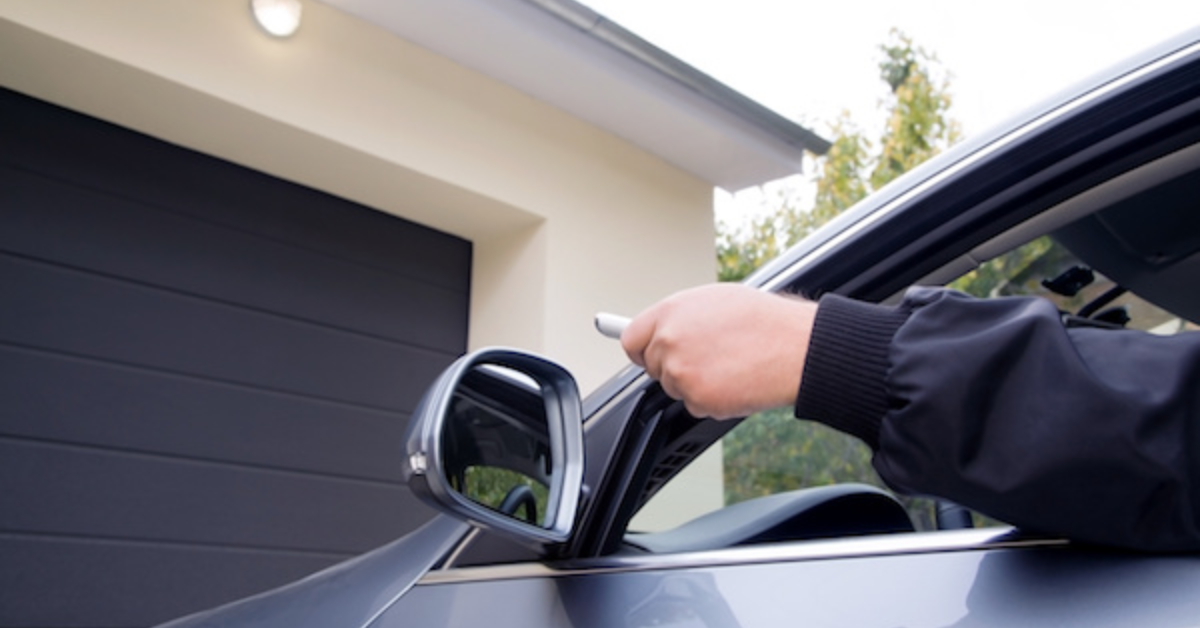How Do Garage Door Remotes Open Doors?
Garage door remotes serve as the silent yet essential orchestrators of our daily routines, wielding the power to effortlessly grant access to our sanctuaries. In the realm of modern convenience, these compact devices stand as gatekeepers, enabling us to command the entrance to our garages with seamless precision. Understanding the mechanics behind how these remotes operate isn't just a technological curiosity; it's a pivotal aspect of ensuring the smooth functioning and security of our residential or commercial spaces.
At their core, garage door remotes encapsulate the fusion of simplicity and technological sophistication. They represent a fundamental component of garage door systems, transforming the daunting task of opening and closing hefty doors into a simple press of a button. Yet, their significance transcends mere convenience; it encompasses the essence of efficient remote operations for garage doors, an aspect integral to ensuring security, accessibility, and the seamless integration of our living spaces.
This comprehensive exploration embarks on an enlightening journey into the essence of garage door remotes, from unraveling their basics to emphasizing their pivotal role in ensuring the efficient and secure operation of garage doors. Join us as we delve deeper into the core question: How do garage door remotes truly open doors? This inquiry aims to demystify the technology orchestrating our daily entries and exits, shedding light on the unseen yet indispensable mechanisms that enrich our everyday lives.
The Mechanics Behind Garage Door Remotes
Garage door remotes consist of several key components working harmoniously to facilitate door operations. The primary element is the transmitter, housed within the handheld device. This transmitter generates a unique signal when the remote button is pressed, initiating the communication process. A receiver installed within the garage door opener unit intercepts this signal. Additionally, batteries power the transmitter, ensuring its functionality.
The communication process between the garage door remote and the opener relies on radio frequency (RF) signals. When a button on the remote is pressed, it triggers the transmitter to emit a specific RF signal, typically within a designated frequency range. This signal carries a unique code assigned to the particular remote, ensuring that each remote communicates with its intended door opener. The receiver in the opener unit, tuned to the same frequency, captures this signal. Upon reception, the opener interprets the signal, validating the code's authenticity, and prompts the motor to initiate the door's movement accordingly.
This communication process occurs swiftly and securely due to the encryption of the signals. Advanced garage door remotes employ rolling code technology, where the transmitted code changes each time the remote is used. This encryption method enhances security by preventing unauthorized access through code interception.
Grasping these mechanics unveils the intricate yet effective communication system operating within garage door remotes. The coordinated functioning of components and transmission signals enables these compact devices to command the substantial movement of garage doors with remarkable ease and reliability.
How Garage Door Remotes Trigger Opening
Garage door remotes serve as initiators for door movements by transmitting distinct signals. Each time a user presses a button on the remote, it prompts the emission of a distinctive signal. Within this signal lies encoded data containing not only the remote's identity but also a specific command to activate the door's opening or closure. These encoded signals swiftly traverse through the air, propelled by radio frequencies, until they reach the designated receiver housed within the garage door opener unit. Once received, this information triggers the corresponding action, either opening or shutting the door, orchestrated by the garage door mechanism.
Exploring Frequency and Range in Remote Operation
The functionality of garage door remotes relies on a specific frequency range for transmission. Typically, these remotes operate within the frequency range of 300 to 400 megahertz (MHz) or 800 to 900 MHz. The choice of frequency range varies based on factors like interference levels and local regulations. Also, modern garage door remotes often employ rolling code technology, ensuring heightened security. This technology involves altering the transmitted code each time the remote is used, preventing potential code interception by unauthorized parties.
The range of operation for garage door remotes can vary based on factors such as the transmitter's power and environmental conditions. Under optimal circumstances, the range can extend from about 100 to 150 feet, allowing users to operate the door from a considerable distance. Comprehending these mechanisms illuminates how garage door remotes trigger the opening of doors. The transmission of unique signals encoded with specific commands, operating within designated frequency ranges, and utilizing advanced security measures elucidates the seamless and secure process through which these remotes activate the movement of garage doors.
Frequency Interference and Solutions for Reliable Operations
Frequency interference can impede the reliable functioning of garage door remotes. Various external factors, such as nearby radio signals, electronic devices, or physical barriers, can disrupt the transmission and reception of remote signals. To combat interference, manufacturers often implement mechanisms to ensure signal resilience. These include employing stronger transmitters to enhance signal strength, utilizing frequency-hopping spread spectrum (FHSS) techniques that switch frequencies to avoid interference, and employing multi-band frequency remotes that can operate in different frequency ranges, minimizing the impact of interference.
Garage door remotes incorporate sophisticated security measures by understanding remote frequency and security. Encryption methods, such as rolling code technology, fortify security, while strategies to counter frequency interference ensure the reliability of remote operations. By integrating these security measures and solutions against interference, garage door remotes maintain a delicate balance between accessibility and robust security protocols.
The Role of Garage Door Motors in Remote Operations
Garage door motors play a pivotal role in translating remote commands into physical door movements. When a user activates a garage door remote by pressing a button, it sends a specific signal encoded with instructions for the door's operation. Upon receiving this signal, the garage door opener's motor is prompted to initiate the corresponding action—either opening or closing the door. The motorized system within the garage door opener responds to these remote commands by activating the necessary mechanisms to execute the desired action, setting the door in motion.
Linking Remote Signals to Motor Mechanisms
The signals transmitted by garage door remotes act as triggers for the motorized mechanisms embedded within the garage door opener. These mechanisms, linked to the motor, orchestrate the intricate process of door movement. The receiver within the garage door opener unit intercepts the signals from the remote, decoding the commands and initiating a series of mechanical operations. These operations engage various components, such as the drive mechanism or the pulley system, which, in turn, exert force to open or close the garage door. The motor, acting as the powerhouse, drives these mechanical actions in response to the remote's instructions.
The seamless orchestration of remote operations is made possible by the symbiotic relationship between garage door remotes and the motorized systems within the opener unit. The remote signals serve as triggers that set the motorized mechanisms into action, culminating in the controlled movement of garage doors, ensuring convenience and security for users.
Common Issues with Garage Door Remotes
Garage door remotes, akin to any electronic device, are susceptible to an array of issues throughout their lifespan. Among the most prevalent problems encountered, signal interference tops the list, often caused by nearby electronic devices or physical obstacles obstructing seamless communication between the remote and the garage door opener. This interference hampers the smooth transmission of signals, disrupting the remote's command execution. Another common culprit affecting remote functionality is the depletion or weakening of batteries, rendering the remote incapable of transmitting signals consistently. As a result, this can lead to intermittent or failed communication between the remote and the opener unit. Furthermore, technical glitches within either the remote itself or the opener unit may trigger malfunctions, culminating in unpredictable or unreliable door operations, adding complexity to resolving these issues.
Tips for Remote Maintenance and Longevity
Maintaining the efficiency of garage door remotes requires periodic checks and preventive measures. Start by ensuring the remote's batteries are in good condition and replaced regularly to avoid signal disruptions. Also, inspect the remote for any physical damage or wear and tear, such as worn-out buttons or cracked casings, which can affect its performance. Clean the remote's contacts and ensure they are free from dirt or corrosion to maintain optimal connectivity. Regularly test the remote's functionality by activating the door to identify any irregularities promptly.
To enhance longevity, consider programming multiple remotes or a keypad entry system as backups. Implementing these backups ensures continued access in case of a malfunctioning remote. Furthermore, periodically inspect and maintain the garage door opener unit, including its sensors, tracks, and mechanical components, to ensure smooth and reliable operation.
Conclusion
Garage door remotes epitomize technological convenience, seamlessly facilitating access to garage spaces. Their intricate functionality, rooted in signal transmission and motorized systems, orchestrates effortless door operations. Ensuring proper remote use is not just about convenience; it's crucial for maintaining the safety and security of residential or commercial spaces. By adopting maintenance practices and understanding their mechanics, users can guarantee reliable access, blending technology and functionality for enhanced convenience and security in everyday life.




